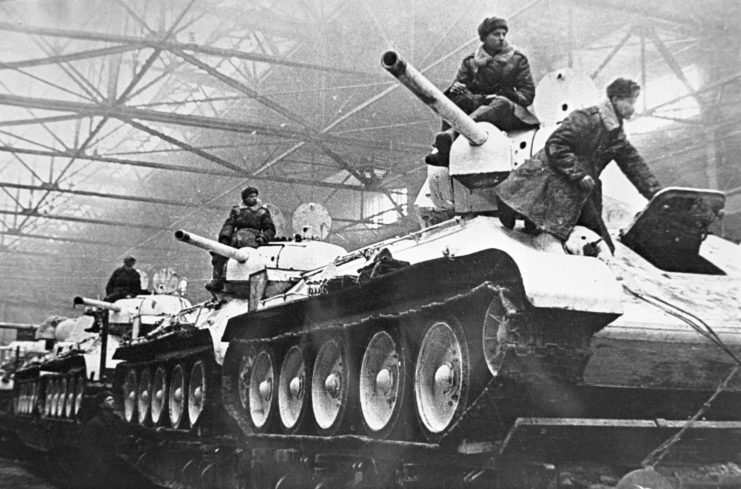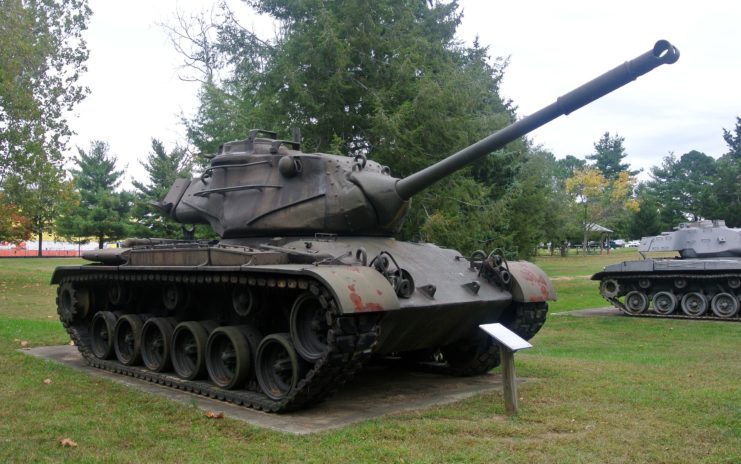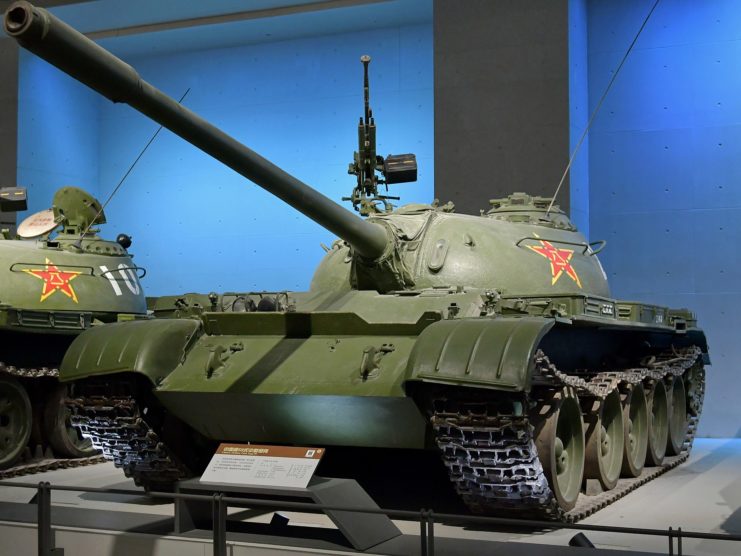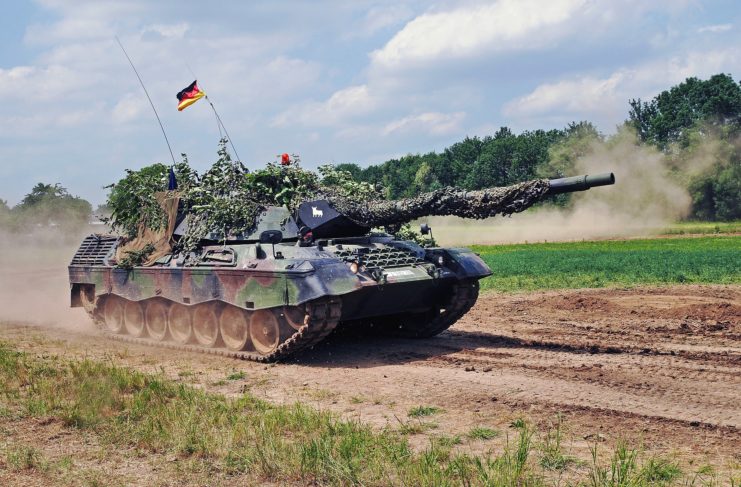Having made their debut in World War I during the Battle of the Somme, tanks have been integral to the military triumphs of various armed forces. Over time, technological advancements have led to the retirement of many in favor of more sophisticated and efficient models. However, a distinguished few have maintained their prominence, boasting impeccable design and active service for over 80 years in some cases.
The following list highlights the longest-serving military tanks that continue to operate to this day.
T-34 (1940 – present)

Kicking off our list is the Soviet T-34, a medium tank that debuted on the battlefield in 1940. Revered as “the finest tank in the world” by German Field Marshal Paul Ludwig Ewald von Kleist after Operation Barbarossa, it demonstrated its effectiveness on the Eastern Front.
Armed with a 76.2 mm F-34 tank gun and two 7.62 mm Degtyaryov (DT) machine guns, the T-34 outclassed the German Panzer tanks it encountered in the Second World War. Its superiority was such that captured T-34s were repurposed by the Germans for their own use. The tank’s triumph made it the most-produced tank of the conflict, and it continued to serve long after the German surrender.
Beyond the borders of the Soviet Union, export models were dispatched worldwide. Although many have retired the tank since, Vietnam, Cuba, North Korea and Yemen are among those to still equip their armed forces with this enduring machine.
M3 Stuart (1941 – present)

The M3 and M5 Stuarts, the sole American World War II-era tanks on this list, stand as some of the oldest military vehicles still in active service. Initially deployed by the Allies during the North Africa Campaign, they faced challenges, revealing shortcomings in their performance. They were also the first American-manned vehicles engaged in tank-versus-tank combat against the Japanese in the Philippines in December 1941.
In response to the M3’s struggles in North Africa, which were attributed to its insufficient armor and armaments, the British opted to avoid using it in tank-on-tank engagements. A similar approach was taken on the Eastern Front, where the Red Army criticized the M3 for its susceptibility to getting stuck in the mud.
However, the M3 and M5 demonstrated improved success during the Italian Campaign and in the Pacific Theater. Despite a challenging engagement at Anzio, the tanks managed to break through beachhead positions. In the Pacific, their small size and light weight made them particularly effective in jungle combat.
Following the Second World War, several countries adopted surplus M3 and M5 tanks, although the majority have since been retired. Notably, Paraguay remains the sole operator of the M3, with 10 in active service and an additional four in storage as of 2014.
Centurion (1946 – present)

Would this be a list about the oldest military tanks still in service without the British Centurion? While the original version of the tank may long be retired, a number of derivatives continue to be deployed, meaning this successful post-war tank is among the oldest to keep chugging along.
Deployed during a number of conflicts, including the Korean War, Vietnam War and the Gulf War, the Centurion was immensely popular, thanks to its combination of armaments, armor and maneuverability. The tank’s most famous moment came in Korea during the Battle of Imjin River, when it covered the withdrawal of the 29th Infantry Brigade of the British Army following a deadly encounter with Chinese forces.
As aforementioned, the original Centurion design has since been retired, but variants still remain in use. This includes the upgraded Olifant operated by the South African National Defence Force.
M47 Patton (1951 – present)

While it may have only seen service with the United States for about a decade, the M47 Patton is memorable for being the second main battle tank (MBT) to be named for famed WWII Gen. George Patton. Intended to be a replacement for the US military’s aging tank fleet, it featured a 90 mm M36 main gun, along with a number of secondary armaments, making it among the most heavily-armed tanks at the time.
Despite being heavily armed, the M47 wound up being the only Patton tank to not see combat while equipped by the US Army and Marine Corps, largely due to the introduction of the M48 not long after it entered service. That being said, it did see action with other armies. It was deployed by France during the Suez Crisis, and Jordanian forces used it against the Israelis in the Six-Day War. Most recently, it was used by Croatians against Serbia during the War of Independence, after which it was retired.
Currently, Iran is the only country to actively equip the M48 in a military capacity, with 170 of the M47M said to be operational.
M48 Patton (1952 – present)

The second tank on our list to be named for Gen. Patton, the M48 was introduced into service with the US Army in 1952 as a replacement for the M4 Sherman, M46 and M47 Pattons, and the M26 Pershing. It cut down a tank’s typical crew size, and featured a number of different armaments over its many variants, the most notable being the 90 mm M41/T139 heavy gun equipped by the majority of models.
The M48 primarily saw use with the American forces fighting in Vietnam, and was equipped by NATO-member countries in a number of conflicts, including the Battle of Mogadishu, the Iran-Iraq War and the Six-Day War. It was eventually replaced in the US Army by the M60 second-generation MBT, but does continue to see use in Thailand, Iran, Greece and South Korea.
T-54/T-55 (1947 – present)

We’ve lumped together the T-54 and T-55 because they’re basically the same tank, just with a few minor differences. Unlike the T-54, the T-55 featured a right-hand cupola with a dome ventilator, but initially lacked a turret-mounted 12.7 mm anti-aircraft machine gun. The T-55 also features a number of upgrades, including a larger engine, increased range and better protections for those operating the tank.
The T-54, T-55 and their variants are the most-produced tank in history, with between 96,500 and 100,000 manufactured. While relatively simple, in terms of design, their existence during the Cold War led Western countries to develop new technologies for possible combat. These included the M60 and Britain’s Royal Ordnance L7 105 mm tank gun.
Despite making up the majority of the Soviet military’s fleet during the Cold War, the tanks have since been retired from service in Russia. That being said, they continue to be equipped by the armies of Afghanistan, Cuba, Ethiopia, Iraq and Nigeria, among many others.
Type 59 (1959 – present)

The only Chinese MBT on this list, the Type 59 is a variant of the Soviet T-54A. Armed with a 100 mm rifled cannon and two machine guns, some 10,000 were produced between 1958-85, with just over half of that amount serving with China’s People’s Liberation Army. Among the oldest military tanks to remain in service, it inspired the development of China’s first home-built MBT, the Type 69.
The Type 59 first saw combat during the Vietnam War, when China equipped the North Vietnamese Army (NVA) with hundreds to use against the M48s and M41 Walker Bulldogs of the American and South Vietnamese forces. It also saw service in the 1971 Indo-Pakistani War, the Sino-Vietnamese War, the Iran-Iraq War and the Gulf War, among a number of other conflicts. Above all, the Type 59 is best known for obstructing the view of the “Tank Man” during the 1989 Tiananmen Square Protests.
Outside of China, which had 300 Type 59s in service as of 2020, a number of countries still keep the tank in their arsenal. These include Bangladesh, Cambodia, North Korea, Pakistan and Iraq, which still have the original Type 59, as well as a number of its variants, in use.
T-62 (1961 – present)

Derived from the T-55 design, the Soviet T-62 emerged as the first production tank to be outfitted with a smoothbore gun capable of firing armor-piercing fin-stabilized discarding sabot (APFSDS) rounds, significantly augmenting its firepower. In addition to the 115 mm U-5TS “Molot” Rapira main gun, it featured a complement of armaments, including a 7.62 mm PKT coaxial machine gun and a 12.7 mm DShK anti-aircraft machine gun.
In the years following its introduction, several variations of the T-62 were developed. A handful of nations continue to operate this armored vehicle, including Cuba, which modernized its fleet of 380 to the T-62M; North Korea, maintaining approximately 2,000 units as of 2011; and Afghanistan, which has equipped its armed forces with both the original model and its T-62M and T-62M1 variants.
More recently, there have been reports from Russia about the utilization of T-62 tanks during the country’s ongoing invasion of Ukraine. This resurgence follows substantial losses on the Russian side, necessitating the reactivation of retired T-62 tanks from storage. Consequently, the T-62 can still be recognized as one of the oldest military vehicles that remain operational today.
Leopard I (1965 – present)

Among the oldest military tanks to still see service is the Leopard I. Developed by West Germany as a replacement for the Bundrwehr‘s aging fleet of American M47 and M48 Pattons, it entered service in 1965, with 6,485 working models being produced between then and 1984. Each is equipped with a Royal Ordnance L7A3 105 mm tank gun and two 7.62 mm machine guns, and covered in 10-70 mm rolled homogeneous armor (RHA).
Almost immediately after its introduction, development began on the Leopard I’s successor, the Leopard 2. Also still in service, with a new variant currently in the works, it features a Rheinmetall Rh-120 smoothbore main gun, which was later adopted by the US-produced M1 Abrams. The Leopard 2 is also among the most heavily-armored tanks in the world, with the capability to protect against rocket-propelled grenades (RPGs), kinetic energy perpetrators (KEP) and anti-tank mines.
Despite being out of production for nearly 40 years, the Leopard I continues to see service across the world. Largely adopted by NATO-member countries upon its introduction, variants continue to be operated by the armed forces of Turkey, Brazil, Greece, Ecuador and Chile. Outside of its use by the Canadian Army during the War In Afghanistan, the tank also saw use during Danish peacekeeping measures in the Bosnian War, and it continues to make appearances in the ongoing Kurdish-Turkish Conflict.
AMX-30 (1966 – present)

The AMX-30 officially entered service with the French Army in 1966, some seven years after it was designed. While one of the oldest military tanks to remain in service, it’s definitely not the strongest, as it sacrificed the quality of its exterior armor for increased mobility – at least, that was the plan. Not long after it was introduced, it was discovered the AMX-30’s transmission was hindering its overall performance.
More from us: The Most Unusual Aircraft to Ever Take to the Skies
Initially equipped by the 501st Régiment de Chars de Combat, the tank saw service with the French Army until 2011, being replaced by the Leclerc MBT. While no longer used by its country of origin, the AMX-30 and its variants still see service with the armed forces of Cyprus, Venezuela, Qatar and Nigeria, among others.
